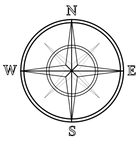The Most Influential
People in History

Évariste Galois / gal WAH /
1811–1832
French Mathematician
Mathematics Ranking 31st of 46

Galois on a French stamp from 1984.
Évariste Galois completely solved the algebraic solution of equations.(1) His ideas were not appreciated during his short life. As part of his solution he proved that there is no general algebraic method for solving polynomial equations of degree greater than four.
Bio
Galois was educated at home until 1823, when he entered the College Royal de Louis-le-Grand. There, the teachers were mediocre and uninspiring and his education languished. However, his mathematical ability burst forth when he studied the works of his countrymen Adrien-Marie Legendre (1752-1833) on geometry and Joseph-Louis Lagrange (1736-1813) on algebra.
Under the tutelage of Louis Richard, one of his teachers at Louis-le-Grand, Galois’s further study of algebra led him to take up the question of the solution of algebraic equations. Mathematicians for a long time had used explicit formulae, involving only rational operations and extractions of roots, for the solution of equations up to the fourth degree, but they had been unsuccessful with equations of the fifth degree and higher. In 1770, Lagrange took the novel but decisive step of treating the roots of an equation as objects in their own right and studying permutations (a change in an ordered arrangement) of them.(2) In 1799, the Italian mathematician Paolo Ruffini attempted to prove the impossibility of solving the general quintic equation by radicals. Ruffini’s effort was not wholly successful, but in 1824 the Norwegian mathematician Niels Abel gave a correct proof.
Galois, stimulated by Lagrange’s ideas and initially unaware of Abel’s work, began searching for the necessary and sufficient conditions under which an algebraic equation of any degree can be solved by radicals. His method was to analyse the “admissible” permutations of the roots of the equation. His key discovery, brilliant and highly imaginative, was that solvability by radicals is possible if and only if the group of automorphisms (functions that take elements of a set to other elements of the set while preserving algebraic operations) is solvable – which means essentially that the group can be broken down into simple “prime-order” constituents that always have an easily understood structure.(3) The term “solvable” is used because of this connection with solvability by radicals. Thus, Galois perceived that solving equations of the quintic and beyond required a wholly different kind of treatment from that required for quadratic, cubic, and quartic equations. Although Galois used the concept of group and other associated concepts, such as coset and subgroup, he did not actually define these concepts, and he did not construct a rigorous formal theory.
Galois’s life was soon overtaken by disappointment and tragedy. A memoir on the solvability of algebraic equations that he submitted in 1829 to the French Academy of Sciences was lost by Augustin-Louis Cauchy. Galois failed in two attempts (1827 and 1829) to gain admission to the Ecole Polytechnique, the leading school of French mathematics – his second attempt marred by a disastrous encounter with an oral examiner. Also in 1829 his father, after bitter clashes with conservative elements in his home town, committed suicide. He rewrote the paper that had been lost and presented it again to the Academy – but for a second time the manuscript went astray. In 1831, he presented his memoir on the theory of equations for the third time to the Academy. This time it was returned but with a negative report. The judges, including Siméon-Denis Poisson, did not understand what Galois had written and (incorrectly) believed that it contained a significant error. They were unable to accept Galois’s original ideas and revolutionary mathematical methods.
In 1832, Galois died in a duel in Paris. In anticipation of his death the following day, the night before the duel Galois hastily wrote a scientific last testament addressed to his friend Auguste Chevalier, in which he summarized his work and included some new theorems and conjectures. Galois’s manuscripts, with annotations by Joseph Liouville, were published in 1846 in the Journal de Mathématiques Pures et Appliquées (“Journal of Pure and Applied Mathematics”). But it was not until 1870, with the publication of Camille Jordan’s Traité des Substitutions (“Treatise on Substitutions”), that group theory became a fully established part of mathematics.
Footnotes:
(1) Isabella Bashmakova and Galina Smirnova, translated from the Russian by Abe Shenitzer, The Beginnings & Evolution of Algebra (Washington, D.C., 2000), p. 115.
(2) Encyclopaedia Britannica, The 100 Most Influential Scientists (Philadelphia, 2008), p. 185.
(3) Ibid., p. 186.
1